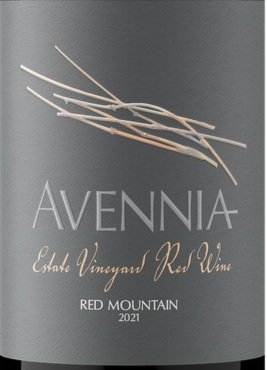What is an AVA and Why is it Important?
By Cole Swanson
November 15, 2024
Every wine bottle’s label designates the area from where its grapes were harvested. In just about every part of the world, countries refer to these places of origin as ‘appellations’. However, North America adopted their own term, American Viticultural Area (AVA).
This labeling term is used only in the United States, and like an appellation, it defines a specific grape growing area.
Within each AVA there are sub-AVAs that differ from the whole because their climatic and geological conditions allow for a wine to have different characteristics than the umbrella AVA.
Let’s use Washington state as an example. The Columbia Valley in eastern Washington is where 99% of all wine grapes are grown in state. As of 2024, it encloses 19 sub-AVAs, such as Walla Walla Valley, Red Mountain, Snipes Mountain, and Yakima Valley. For a bottle of wine to designate a specific AVA, 85% of the grapes used to make the wine must have been harvested in that specific AVA.
UMBRELLA AVA
The Columbia Valley AVA
In the case of the Merlot pictured to the left, the bottle designates that at least 85% of the grapes used for this wine came from the Columbia Valley AVA. This means that the remaining 15%, technically, could come from outside of the valley, such as from the Puget Sound AVA.
Importantly, this Merlot states the Columbia Valley as its designation of origin, meaning that is a blend of Merlot from different sub-AVAs within the Columbia Valley. However, no sub-AVA makes up 85% of this blend, and therefore its designation of origin cannot be labeled more specifically than the umbrella AVA.
SUB-AVA
Red Mountain AVA
A sub-AVA, such as the Red Mountain, is a particular location within the Columbia Valley whose terroir is so unique that it provides distinguishable tasting notes from the whole.
Like with the Columbia Valley, to label a wine as “Red Mountain,” 85% of all harvested grapes must come from the Red Mountain. If a winemaker wishes to pick grapes from other sites, such as Yakima Valley, Walla Walla, or Candy Mountain, they may still label their wine as Red Mountain as long as they meet that harvesting standard.
STATE-WIDE LABELING: NO SPECIFIC AVA
Washington state
If a wine is labeled as “Washington state,” that means that at least 75% of the grapes were harvested from within the state itself, but did not meet the above requirements to use a more specific labeling term. This could be the case if grapes used in the wine came from two different states, such as both Washington and Oregon, but, still, three-fourths did not come from a specific AVA.
The reason for AVAs and their subsidiaries is to provide context as to what the wine may taste like. The more specific a label designation, the greater ability you may have at understanding what’s in the bottle.
For example, Red Mountain is known for its bold reds due to its warm climate. Factors such as this, along with soil makeup and other climatic influences, are what distinguish each AVA from the rest.
So, if you’re grabbing a wine bottle from the grocery store shelf, and don’t know what it will taste like, understanding its origins is very helpful. Start generally, using the information above, and work your way to learning about different vineyards and wineries so you can best narrow down which producers you like the best.





